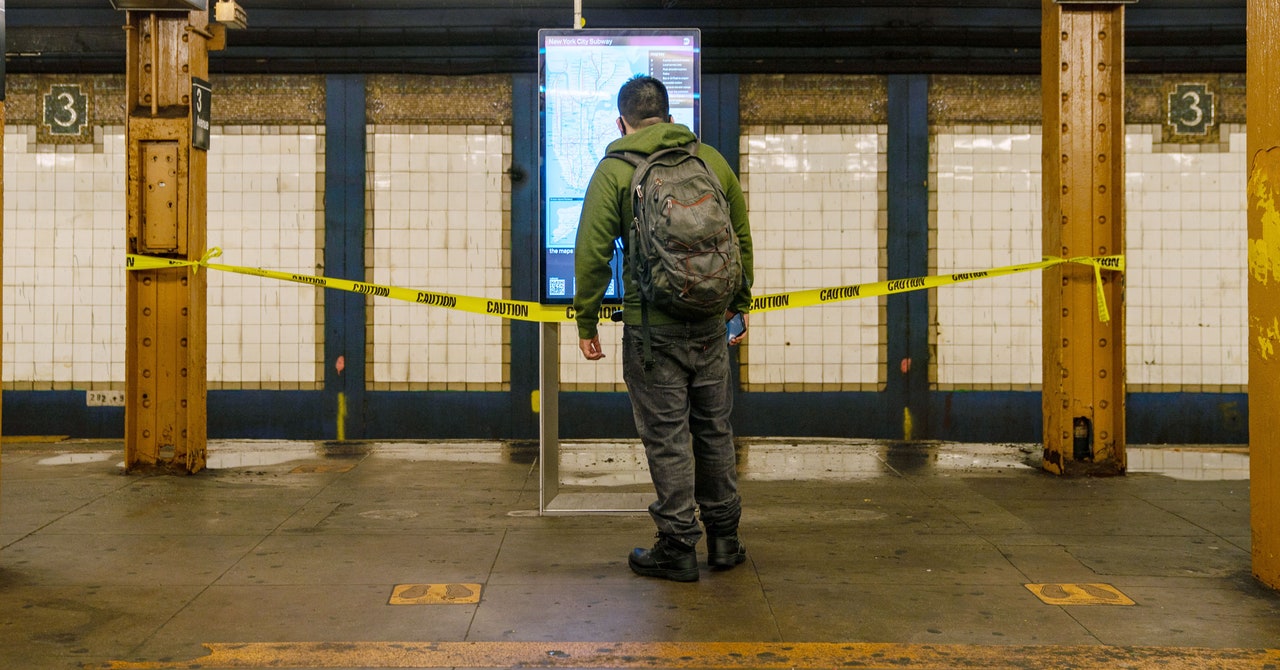New York City Wasn’t Built for 21st Century Storms

In only a few hours on Wednesday evening, between 6 and 10 inches of rain fell on New York City—greater than has fallen on San Jose, California, up to now yr. Water rose in basement residences and leaked by means of roofs. Rain streamed into subway stations and pooled on the tracks. The stays of Hurricane Ida, which had thrashed the Gulf Coast earlier in the week, introduced floods to the Northeast. Across the area, the demise toll reached 40 by Thursday night. Subway delays and suspensions proceed.
The metropolis’s infrastructure, you see, was constructed within the late 19th and early 20th centuries, to resist the form of storm that comes each 5 to 10 years. Now brutal, record-breaking storms are an annual incidence. What was left of Ida reworked the scene of on a regular basis commutes right into a disturbing reminder that climate change comes for us all. Wildfire thunderclouds within the West, blackouts in Texas, hurricanes in the South, torrential downpours within the East: “It’s all the stuff we said would happen 20 years ago,” says Zeke Hausfather, a local weather scientist and the director of local weather and vitality on the Breakthrough Institute. “It’s just a little crazy to see it all happening at once.”
The storm flooded roadways. But it additionally inundated the options aimed toward getting individuals out of their vehicles: bike lanes, sidewalks, and public transit methods. For a time in New York on Thursday, all that was underwater. The photographs of water spilling into subway stations introduced the disaster residence. “You don’t have to be a person with a great understanding of infrastructure to know that that is a problem,” says Michael Horodniceanu, former president of the Metropolitan Transportation Authority’s Capital Construction Company and now the chair of the Institute of Construction Innovations at NYU. “We’re starting to see the results of what is, in my view, a certain amount of lax attention to what our infrastructure is doing.”
New York had its first climate-related wake-up name 9 years in the past, when Hurricane Sandy introduced a storm surge that flooded low-lying areas and, sure, subway stations. Since then, town has spent virtually $20 million on climate-proofing town, according to the Mayor’s Office of Resiliency. But a few of that funding went to fixing a special drawback than the one offered by Ida: water coming from the rivers. This week, all of the moist stuff fell from the sky, threatening even areas above sea stage.
Ida’s remnants dumped all that water on the Northeast due to a climatic quirk. You would possibly anticipate much less rainfall on a warming planet, however some elements of the world, together with the US’ Northeast and Midwest, are seeing an increase in heavy precipitation. Temperature immediately impacts how a lot moisture the environment can “hold” earlier than it begins raining, says Hausfather. Cooler air holds much less moisture—and warmer air holds extra moisture that then falls as rain.
A hurricane feeds on warmth: Ida intensified so rapidly as a result of abnormally heat waters within the Gulf of Mexico boosted it simply earlier than landfall, leading to 150-mile-per-hour winds. As a swirling mass of heat air, Ida held on to an entire lot of moisture. So despite the fact that the winds abated because it pushed inland, the storm carried an unimaginable quantity of moisture north, drenching states alongside the best way.
Climate change didn’t create Hurricane Ida, however scientists understand how local weather change is making hurricanes like Ida worse. “It’s one of the most basic physical relationships we have in the climate: For every one degree [Celsius] you warm the atmosphere, you get about 7 percent more moisture in the air, and that means that you can have much heavier rainfall events,” says Hausfather. “Hurricanes have gotten wetter in the last few decades, and that’s projected to continue into the future.” Scientists have additionally proven that hurricanes have been intensifying extra quickly in recent times, as Ida did, on account of warming waters within the gulf.
No one may foresee this when the bones of New York City have been pieced collectively greater than 100 years in the past. When engineers dream up a sewer system, they think about the worst storm the system may drain, a storm which will solely come as soon as in 10 or 20 years. New York’s is designed for a once-in-five-years storm. Scientists nonetheless must tabulate the monster that simply inundated town, however it certain as hell wasn’t a one-in-five. The metric could be extra like centuries.



